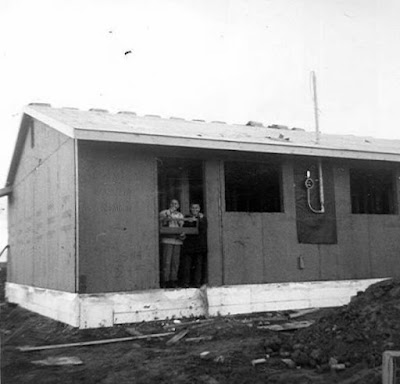2025
52 Ancestors in 52
Week 15
Prompt - Father-in-Law
Anton Hoffart (Tony)
Birth: January 16, 1923 Minton, Saskatchewan, Canada
Death: August 18, 1992 Saskatoon, Saskatchewan, Canada
Parents: Rochus Roy Hoffart Marian Hoffart (born Gross)
1889 - 1970 1892 - 1957
Siblings:
Eva Clare Berger (born Hoffart); 1915 - 1991
Peter Paul Hoffart; 1917 - 2004
Jacob Joseph Hoffart; 1919 - 1997
Barbara Hornung; 1920 - 2003
John Hoffart; 1925 - 2005
Regina Coupal (born Hoffart); 1927 - 2023
Henry Hoffart; 1929 - 2006
Wife: Clara Carolina Hoffart (born Jahnke) 1928 - Living
Children:
William Kenneth Hoffart: born 1954
Elaine Patricia Reed (born Hoffart): born 1958
Norma Ruth Armstrong (born Hoffart): born 1963 March 11, 2018: Elaine, Norma, Clara and Bill
Biography
Anton Hoffart, also known as Tony, was born on January 16, 1923, in Minton, Saskatchewan, Canada, to Rochus 'Roy' Hoffart and Marian Hoffart (born Gross). His father, Rochus 'Roy', was born on August 14, 1889, in Tulcera, Romania, while his mother, Marian, was born on July 2, 1892. Anton grew up in a large family with six siblings: Eva Clare, Peter Paul, Jacob Joseph, Barbara, John, Regina, and Henry.
On October 6, 1952, Anton married Clara Carolina Jahnke, who was born on March 11, 1928, in Killaly, Saskatchewan, Canada. Together, they had three children: William Kenneth, Elaine Patricia, and Norma Ruth.
October 6, 1932
Anton Hoffart passed away on August 18, 1992, at the age of 69 in Saskatoon, Saskatchewan, Canada. He was buried in Saskatoon, Saskatoon Census Division, Saskatchewan, Canada.
Last Name Origins
The surname Hoffart is of German origin, derived from the Middle High German word 'hof' meaning 'court' or' farm', combined with 'hart', which means 'hard' or 'strong'. It likely referred to someone who lived near a farmstead or was associated with a stronghold. The name may also have been used as a nickname for someone known for their strength or resilience.

The Hoffart Family, Taken June 23, 2002
Wendy












%20%20-%20Family%20House%20on%20Witney%20Ave%20Texted.jpg)


